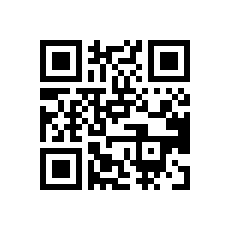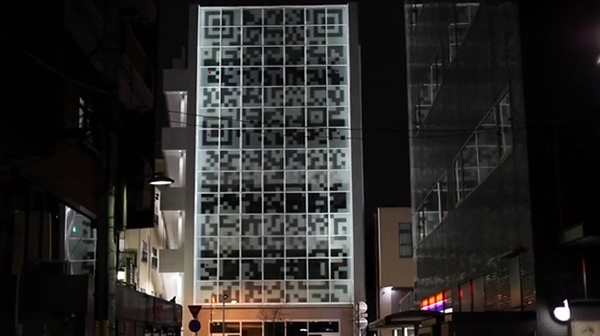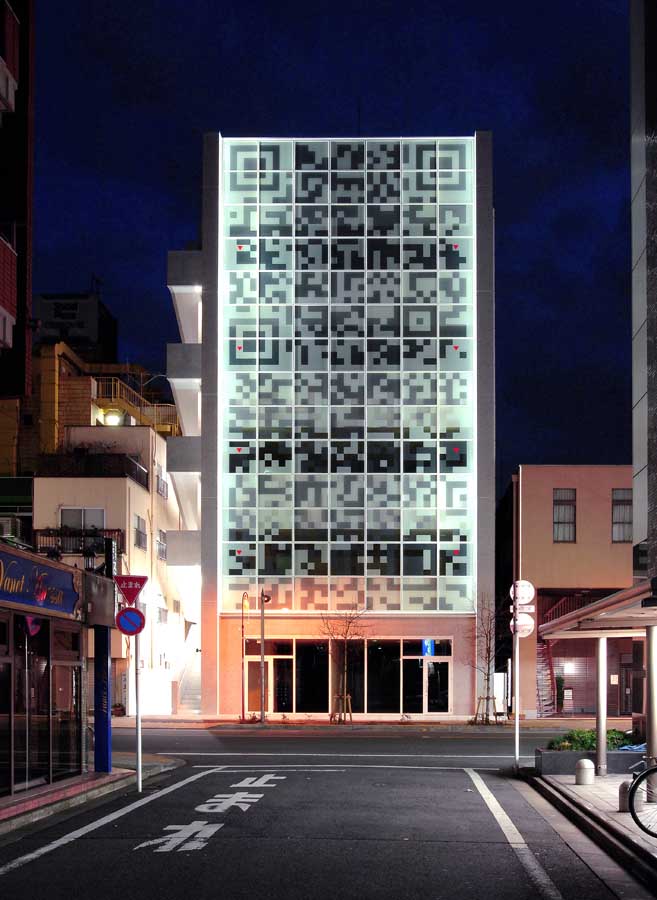QR Codes All Around You
 QR codes have definitely become more mainstream for people all over the world. Originally created to easily keep track of automobile inventory, QR codes are now seen everywhere (and on everything). These square 2D bar codes have entered the zeitgeist and are a symbol of popular culture.
QR codes have definitely become more mainstream for people all over the world. Originally created to easily keep track of automobile inventory, QR codes are now seen everywhere (and on everything). These square 2D bar codes have entered the zeitgeist and are a symbol of popular culture.
QR codes offer a great way to connect real-life objects to digital content. Aside from their common function, these black and white square pixels are increasingly being used as a design statement.
Let's take a look at some of the uncommon uses for the QR code in everyday life.
A QR Code On a Building?
The N Building, designed by Japanese architects Terada Naoki and Hirate Kenichi of Teradadesign, takes QR codes to the next level. The two designers envisioned a world where buildings, rather than being cluttered with ads and billboards, compromising the structure's aesthetic, are covered with QR codes.
This futuristic building is located at the heart of the shopping district in downtown Tokyo. When the QR code is scanned, it opens up a site that contains up to date store information.

According to a Teradadesign representative, “We held an opening which included the limited release of an iPhone application made specifically for N Building. If a QR Code is static, what could we do with a dynamic device like the iPhone? Our proposed vision of the future is one where the facade of the building disappears, showing those inside who want to be seen. As you press on the characters their comments made on online appear in speech bubbles. You can also browse shop information, make reservations and download coupons. Rather than broadly tagging, we display information specific to the building in a manner in which the virtual (iPhone) serves to enhance the physical (N Building). Our goal is to provide an incentive to visit the space and a virtual connection to space without necessarily being present. “


QR Code Chocolates
Why not have your QR code and eat it too? Chocolates are a great way to satisfy a sweet tooth and deliver a dose of marketing. Chocolate Graphics (http://www.qrchocolates.com) lets people customize their marketing with these delicious creations. The QR codes are edible and embedded onto the chocolate bars themselves. They use a patented process to emboss the QR code on the chocolate so the result is 100% chocolate, with no icing or ink used. People can scan the QR codes with their mobile phones to access websites, coupons and videos.
"Chocolate Graphics International has such a unique product and nothing quite like it is offered in the US. Since the product's debut several months ago, it has been extremely well received and word of mouth orders are already coming in!" said Carol Webster, president of Chocolate Graphics International USA.
The QR code chocolates can be used as promotional chocolates, hospitality chocolates, wedding chocolates, and personalized chocolates for every occasion.
Available in dark chocolate, Belgian white chocolate and semi-sweet Belgian milk chocolate with 60% cocoa, the QR code chocolates are ¼ inch thick and are either 4 inch or 2 inch squares, attractively packaged in cellophane wrappers. Chocolate Graphics International is based in Hendersonville, Tennessee and delivers internationally. (image courtesy of Chocolate Graphics International)

QR Code Painting
The Virginia Museum of Fine Arts launched a campaign promoting an exhibit of Pablo Picasso's works. The exhibition featured 176 works from Picasso's personal collection entitled “Picasso: Masterpieces from the Musee National Picasso, Paris."
The ad campaign used a photo of Pablo Picasso made of QR codes which can be scanned by a mobile phone. The QR codes direct to a website featuring15 artworks by Picasso, which also included an invitation to buy tickets to the event. There's also a dedicated Facebook page promoting the exhibit. The campaign was created by Martin Agency in Richmond, Virginia.
“We started thinking about Picasso and how progressive he was as an artist and it made sense to use technology,” Keith Cartwright, group creative director at the Martin Agency, said. “To honor the progressive nature of Picasso’s work, we created art out of modern technology. Just as Picasso once took found objects – bicycle handlebars, etc. — and brought them together to create works of art, we were able to take something technologically functional, QR codes, and use them as building blocks to create something arresting and beautiful.”
Ads with the QR codes were displayed in 33 Starbucks locations in Richmond, Virginia. Upon entering, augmented reality visions of the art can be seen on the walls with a Layar browser.
“The Virginia Museum’s Picasso exhibition is the most ambitious show in the 75-year history of our museum,” VMFA Director Alex Nyerges said. “The occasion of this landmark exhibition is an ideal time to deepen our presence throughout social media. The innovation of the Picasso QR campaign and augmented reality is in keeping with the innovative genius of this master artist.”
Other articles by this author:
Best Phone Apps for Health and Nutrition
Best Mobile Coupon Apps for Groceries
Microsoft Tag Adds Support for NFC and QR Codes
DNA Barcoding the International Barcode of Life
QR Generator Mobile Apps Create QR Codes on the Go
{jcomments on}

